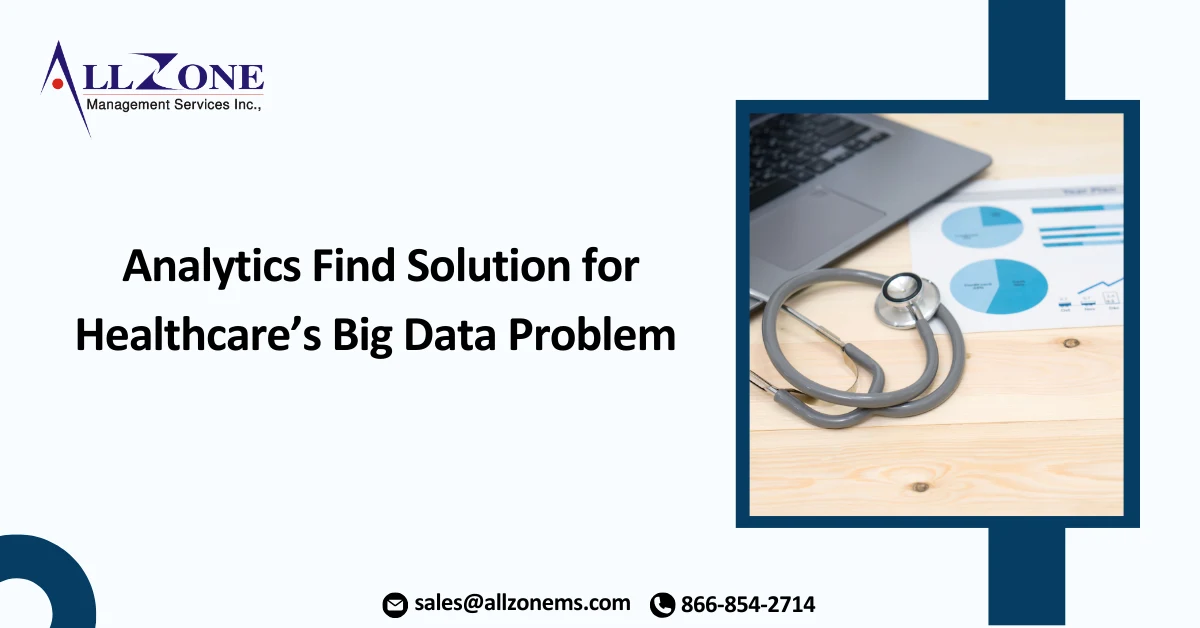Improving data analytics in healthcare has potential includes cost savings and improved patient health and wellness. Here are the two ways through which this improvement can be accomplished:
- Adopt a business analytics strategy that process huge amounts of healthcare data, rather partnering different analytics tools that results in high IT expense and reduced user adoption.
- Help payers and healthcare providers to understand what the data is about and how to work with the data.
The amount of healthcare data produced is increasing day by day and it’s expected to reach 2,314 Exabyte’s by 2020.
The Healthcare sectors are overwhelmed with data provides from patients, physicians, hospitals, Clinics, health fairs and emergency department. With technology development, the healthcare data will continue to increase as time goes. Healthcare organizations that don’t adapt predictive analytics technique will simply cease to exist or crushed, under weight of healthcare data or consumed by healthcare companies that understand the power of data analytics and adopt it to leverage and use the information at enterprise-wide level.
“Big data analytics has the potential to transform the way of using advanced technology by healthcare providers to gain insight from their clinical and other data sources and make informed decisions. According to the article published by Health Information Science and Systems, “there will be widespread adoption and use of big data analytics throughout the healthcare sector and the healthcare industry with improved outcomes by reducing costs”.
Healthcare Business Analytics
The use of predictive analytics in healthcare found 60% of respondents currently use predictive data processing methodologies. The good news is that the organizations using predictive analytics are actually achieving their desired results.
Using predictive analytics in healthcare brings following results:
- Reduction in costs
- Improvement in Patient Satisfaction
- Better clinical outcomes; and
- Increase in Profit
Healthcare business that ignores to use enterprise analytics can survive today but probably not in the future because of overloaded healthcare data production.
Today’s implementation of business analytics represents where EMRs were 20 years ago. There are many software vendors providing established department software and several software from different sources were adopted by a single organization.
This resulted in excessive healthcare spending trying to integrate solutions, fragmented workflows across departments and difficulty organizing resources across the board. The organizations may stick with multiple vendors, by adoption EMR as an enterprise solution that makes sense. It created many internal synergies, improved patient and physician satisfaction, improved care quality and many other improvements and efficiencies in general.
By Today, Healthcare analytics has same status with hundreds of companies selling with different spin on analytics or focusing on specific aspect of healthcare data. Fragmented utilization of healthcare analytics drives excessive spending and low staff adoption and ROI.
It is critical for healthcare organizations to adopt enterprise analytics strategy, instead of that they were looking to consolidate solutions. They understood from EMRs that attempting to partnering or combining with difference solutions becomes more expensive and completely ineffective. Such cobbled-together approaches are extremely low in acceptance and use. This makes the business uncompetitive, because it creates an environment of:
- Low efficiency;
- High labor costs;
- Ineffective patient care; and
- Inefficient performance.
Healthcare Organization adopting enterprise analytics strategies will create new opportunities and frees to invest in new service lines, to serve new populations, to build new facilities or to acquire other healthcare organizations.
Predictive analytics is the important part of enterprise analytics which is the first step of bringing organization on board. Predictive analytics helps organization to make decision on what’s working and what not:
- Revenue-cycle management forecasting models;
- Analyze and take action on population health participants
- Predict future challenges that drive costs;
- Locate patients for intervention with drug-seeking behaviors;
- Identify anomalies or outliers that cause substantial health or financial risk
Real healthcare change can be achieved with enterprise adoption, accelerated predictive analytics and taken to those on the organization’s business and patient care sides. The opportunity for real health-care changes is huge.

